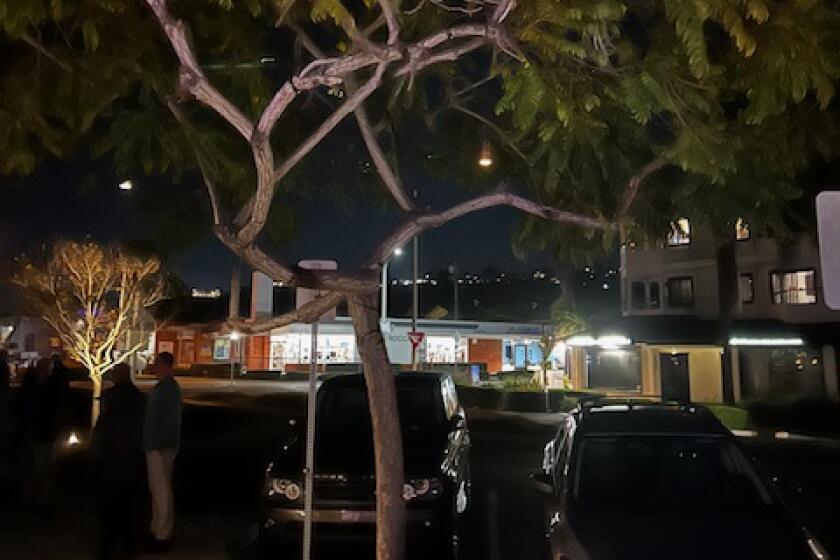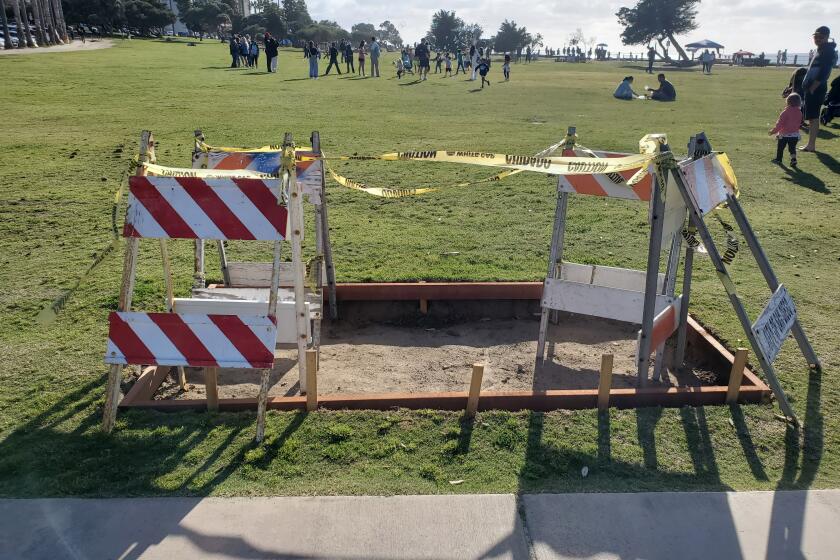La Jolla off-leash dog beach near SIO vetoed: Scientists say Area of Biological Significance is a poor fit
Although La Jolla Country Day School student Navid Massarat is researching all options for an off-leash dog beach, the possibility of the area north of Scripps Pier has been effectively nixed. And, according to Scripps Institution of Oceanography (SIO) lab researchers, it is for the best.
“We are still exploring all possible locations, but recent information provided by the City affirming Scripps’ jurisdiction has moved us to also look for a different location,” Navid said.
The area he was originally proposing is Scripps-owned property, and an Area of Special Biological Significance (ASBS), so Scripps researchers indicated it would be an ill-fit for a dog beach. The beach was established as a Coastal Reserve in the 1920s and an ASBS in the 1970s. Scientists use the area for marine research, and water under the pier is pumped into SIO and Birch Aquarium.
To highlight the importance of this area, SIO principal investigator Dr. Jennifer Smith and postdoctoral scholar Dr. Emily Kelly took La Jolla Light for a walk on the beach to discuss the biological diversity of the reserve. Not including bacteria, there are hundreds of species of algae, invertebrates (crabs and sea anemones), vertebrates (fish and birds) in the reserve. Human access is allowed, and walking, running, tide pool viewing, surfing and swimming are permitted.
“This area is protected under multiple agencies. It is part of the Scripps Coastal Reserve, which is under the UC Natural Reserve System (of campuses with protected natural areas) and includes the coastal trail and the beach; it’s also a ASBS, which is a California-governed body where regular water quality monitoring is done with the goal of protecting the area wildlife; it’s also a Marine Protected Area, which is under the department of fish and game,” explained Smith.
The intertidal zone (the section of beach between the high tide and low tide lines) is home to several organisms that have to toe the line between staying wet but being far away from predators. Kelly explained if they are too far out of water, they dry out; but if they are further in the water, they are susceptible to predation.
“Bean clams are a really neat example, they stay mostly in the sand and are only exposed at low tides,” she said. “Bean clams can be found in the sand here, and the birds needle their beaks to get to the clams.” She added that what looks like shells dotting the sand, are actually the tiny bivalves.
Adding to the uniqueness of the reserve is the rocky intertidal area, home to small fish, hermit crabs, snails, small fish, oysters, sea anemones, clams and barnacles. At low tide, the rocky area is a plentiful tide-pool. At high tide, the area is largely under water.
“This rocky intertidal ecosystem is one of the only ones along this whole beach going up to North County,” Smith continued. “There is bio-diversity there and shore birds that make use of that area, so having dogs running around and picking things up is something we want to avoid. We can’t control dog’s behavior, so they could be chasing sea birds and dig up the invertebrates that live in the sand that the birds feed on.”
Noting that the definition of “take” is different in the scientific context, Kelly said that take means to literally take something away or to influence behavior, and that a dog’s presence could negatively influence behavior.
Due to the rarity of the rocky intertidal zone and the fact that, as a reserve, it was kept safe from heavy human impacts in advance (in a seemingly prophetic act by Ellen Browning Scripps, who provided land to SIO, which gave them access to the ocean), the area is used to monitor water quality and measure how ecosystems have changed over time.
When SIO was founded, Ellen Browning Scripps commissioned the building of the pier. “She was about environmental stewardship and protection. There is a special history with this coastline,” Kelly said, adding, “Sometimes a sandy beach just looks like a lovely place to lay out a beach towel, but it is home to a lot of organisms living in the sand. They feed a lot of the shorebird population and other small fish and rays when the tide is higher. There are also little worms that live in the sand. It’s a much more dynamic environment than you might think.”
Get the La Jolla Light weekly in your inbox
News, features and sports about La Jolla, every Thursday for free
You may occasionally receive promotional content from the La Jolla Light.




